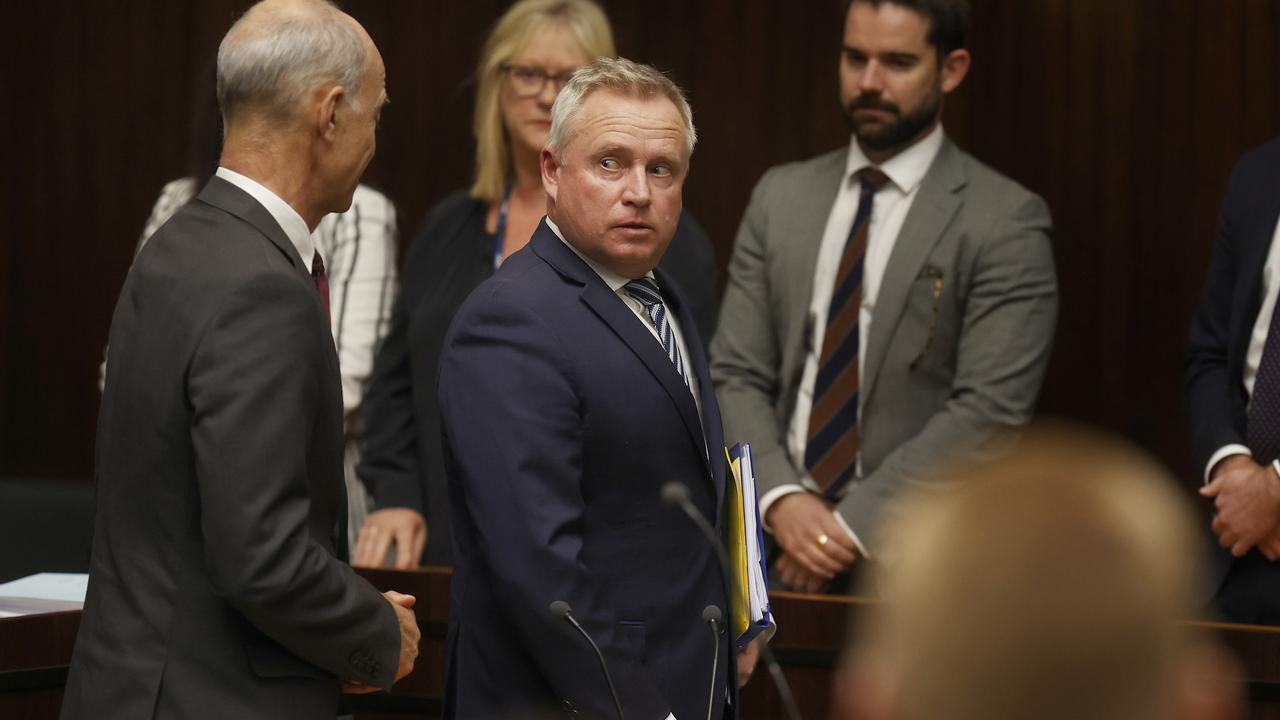Let’s think big for a better Tasmania
CARL HARRIS: The economy is bubbling along but booms don’t last and reforms do

Opinion
Don't miss out on the headlines from Opinion. Followed categories will be added to My News.
THERE is no doubt that the Tasmanian economy is travelling quite well at the moment. Growth, employment, spending and investment indicators are all strong. We have consistent positive net interstate migration and increased tourism and spending. We are seeing growth in the economy across health, agribusiness, education and tourism, and our advanced manufacturing sector continues to perform well.
However, there are a few things to keep our eye on. As our economy transitions to more flexible working arrangements and some of our booming sectors utilise more part-time work, we are seeing an increase in underemployment. Housing and rental availability and affordability are also a problem.
So when things are good and business confidence is high should we sit back? Absolutely not. We think now is the time to look at some of those long-term underlying structural factors that have historically limited Tasmania’s growth, and in the present environment could accelerate Tasmania’s performance.
Be Bold Tasmania is a report that seeks to articulate what those structural factors are and then consider what we can do about them. We determined seven bold actions that we believe could have a lasting beneficial impact on the economy.
POPULATION — When we talk about population growth the first thing we have to do is bust the myth that we want Tasmania to remain as it is and growing our population will detrimentally impact our lifestyle. We are of the view that we need to grow our population just to maintain our lifestyle!
During the 1990s we lost 25,000 people who would be the backbone of today’s workforce. In 1986 we had 22,000 more 15 to 34-year-olds than we do today. These numbers are confronting and we see this in certain sectors and geographic locations who simply cannot get the workers they need.
The impact of this exodus and the retirement of Baby Boomers means we need to replenish the workforce, otherwise the number of those not in the labour force (which already exceeds those in the labour force) will continue to grow, our participation rates will fall and our lifestyle will be impacted.
Action one of our report is acknowledging housing issues need to be addressed, that we should target NSW, Victorian and overseas families in sectors that play to our strengths and are growing or where we have current skill shortages. And the beauty of attracting a family is you get the current generation of workers and the next generation.
EDUCATION — There have been a lot of positive initiatives in education, with changes to the Education Act, Year 12 extension, the Beacon Foundation Collective ed project and the University College. These will all have long-term benefits.
Continuing the Year 12 extension removes the biggest barrier to retention and completion through years 10 to 12. The important thing here to appreciate is this is unlikely to be perfect from day one. It takes time and it is the end game (student retention and attainment) that is the most important thing.
We need to build higher aspirations within our students and our communities. The last school age action was in relation to making school better aligned to workplace transition and more engaging for students who may not wish to go onto the tertiary level.
We also need to address the future of work in the education system, and consider this in our current workforce.
For the large-scale jobs at risk we need to build resilience, make workers adaptable to change and assist them retraining and reskilling. If Tasmania can get this right, and we should be able to do that, given our size, our ability to rapidly and seamlessly redeploy our workforce could pay huge economic and social dividends for the state.
REFORM — Privatisation, if done well, for the right reasons and communicated appropriately, should not be considered a bad thing and can bring benefits to the Tasmanian public. Being a state with a small population limits our ability to raise significant funds through taxation and as a result we are very reliant on federal funding and support.
Our unfunded superannuation liability on an undiscounted basis is estimated to be $21 billion. While it is currently being funded through the annual budgets, this cost is expected to increase and peak at 54 per cent higher than it is currently. Those funds will need to come from future increases in revenue or reductions in expenditure.
We believe there is a strong case for the establishment of a Tasmania future fund to address both these issues.
In local government, 29 councils for 520,000 people is too many. We have achieved successful reductions in local government in the past, reducing from 46 to 29, and it is time to address this again. We would like to see a stronger position taken on mandated local government amalgamations and reforms.
Finally, while there are only so many levers state government can pull in relation to tax reform without broader reform of the GST we would like state taxes reviewed to see if we can tax Tasmania in a more economically smart and socially responsible way.
For many of us, times are good and it’s an exciting time to be in Tasmania. We need to address some issues and we face some risks but we have an ideal platform from which to make some lasting structural change. While the current booms are likely to continue for a while, history tells us booms do not last. Strategic structural reforms do.
Carl Harris is managing partner Deloitte Touche Tohmatsu Tasmania.


